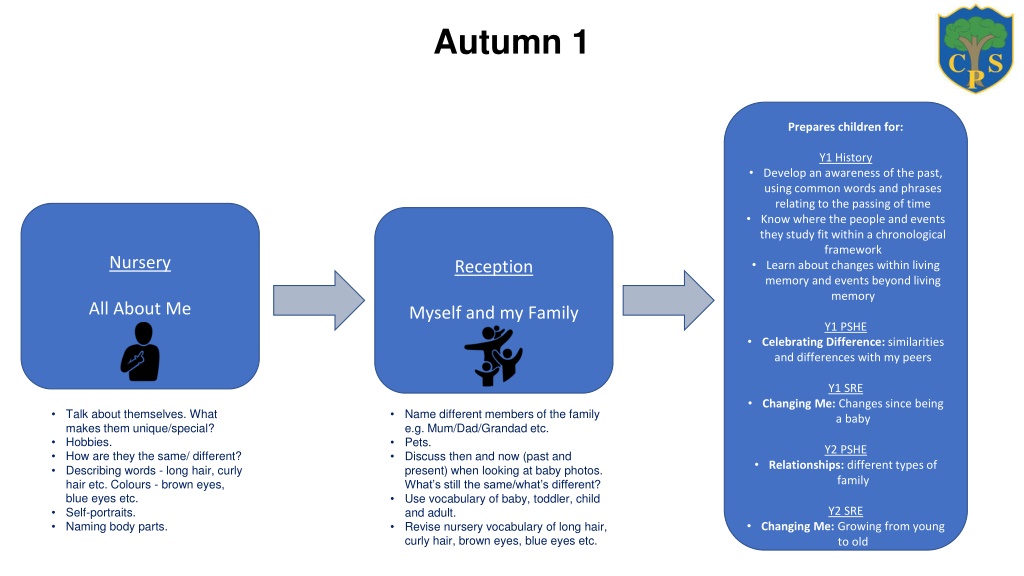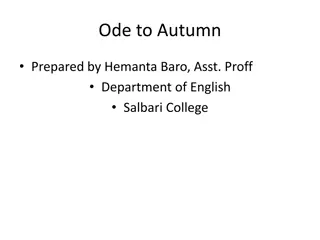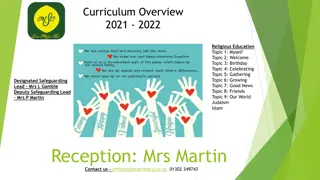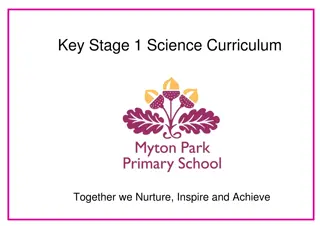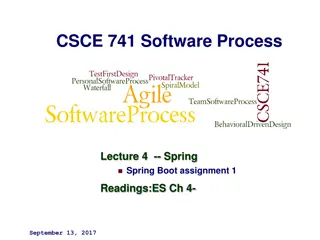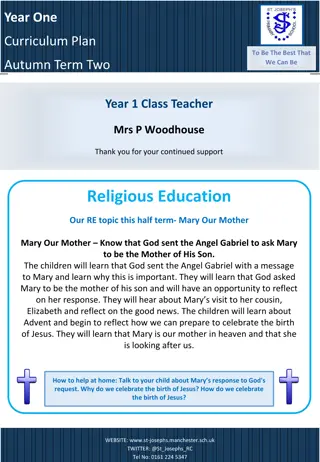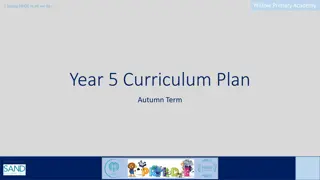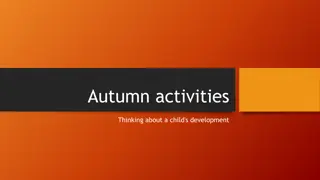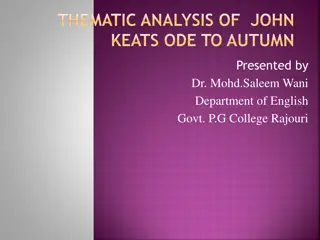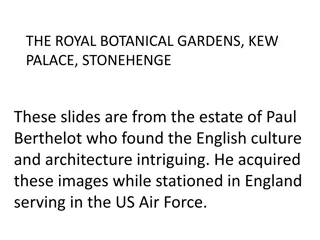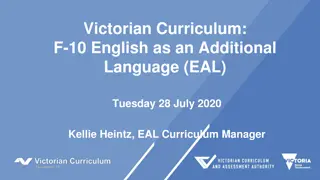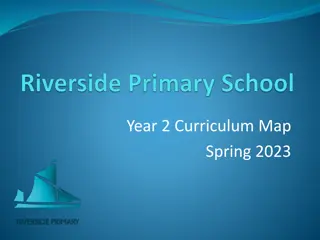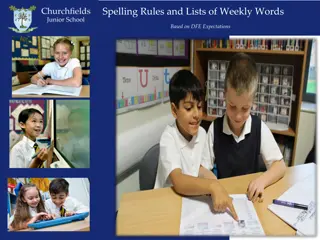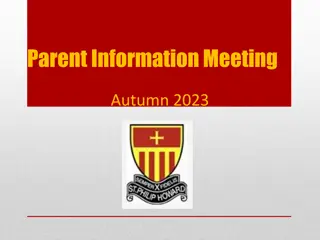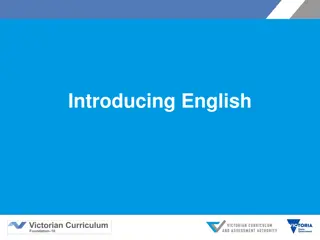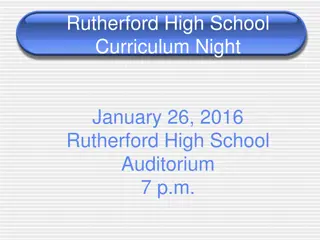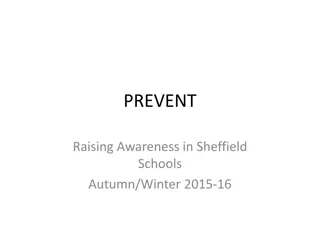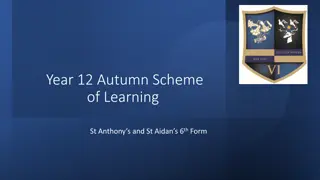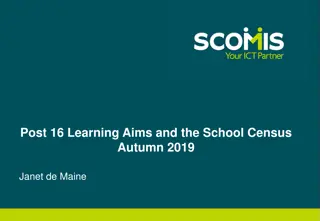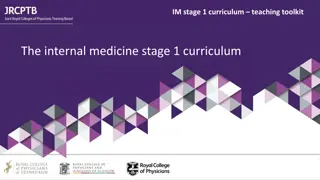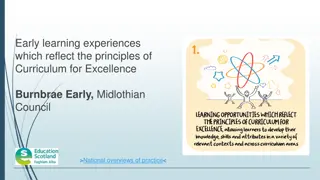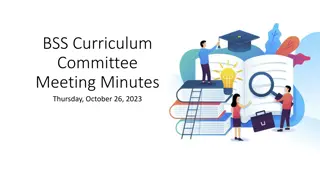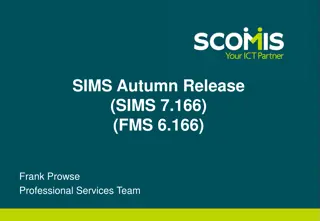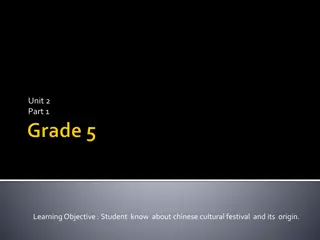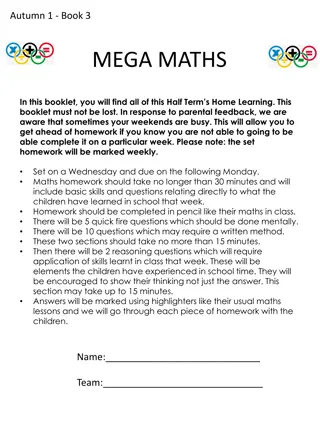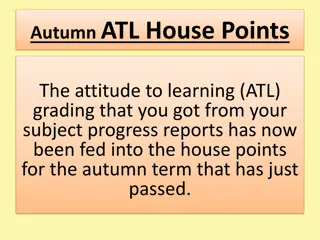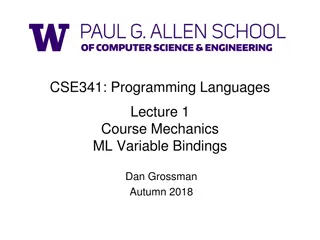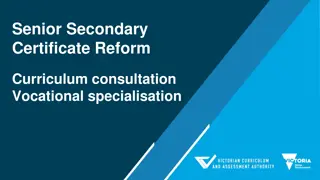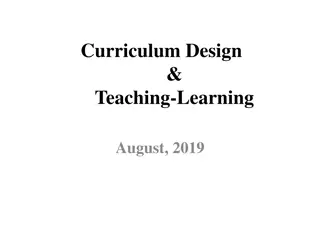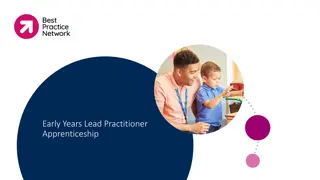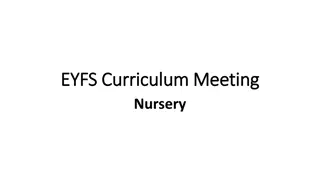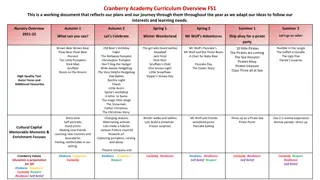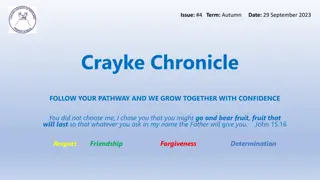Early Learning Curriculum Overview: Autumn and Spring Terms
This curriculum overview outlines the topics covered in the Autumn and Spring terms for early learners in areas such as History, Geography, PSHE, and Design & Technology. Children explore concepts like changes over time, family, local environment, significant individuals, and community helpers through engaging activities and discussions. The curriculum aims to develop a foundational understanding of the past, the world around them, and their roles within it.
Download Presentation

Please find below an Image/Link to download the presentation.
The content on the website is provided AS IS for your information and personal use only. It may not be sold, licensed, or shared on other websites without obtaining consent from the author. Download presentation by click this link. If you encounter any issues during the download, it is possible that the publisher has removed the file from their server.
E N D
Presentation Transcript
Autumn 1 Prepares children for: Y1 History Develop an awareness of the past, using common words and phrases relating to the passing of time Know where the people and events they study fit within a chronological framework Learn about changes within living memory and events beyond living memory Nursery Reception All About Me Myself and my Family Y1 PSHE Celebrating Difference: similarities and differences with my peers Y1 SRE Changing Me: Changes since being a baby Talk about themselves. What makes them unique/special? Hobbies. How are they the same/ different? Describing words - long hair, curly hair etc. Colours - brown eyes, blue eyes etc. Self-portraits. Naming body parts. Name different members of the family e.g. Mum/Dad/Grandad etc. Pets. Discuss then and now (past and present) when looking at baby photos. What s still the same/what s different? Use vocabulary of baby, toddler, child and adult. Revise nursery vocabulary of long hair, curly hair, brown eyes, blue eyes etc. Y2 PSHE Relationships: different types of family Y2 SRE Changing Me: Growing from young to old
Autumn 2 Prepares children for: Y1 Geography Where In The World Are We?: Use aerial photographs and recognise landmarks and basic human and physical features Devise a simple map and use and construct basic symbols in a key Use simple fieldwork to study the geography of their school and its grounds and the key human and physical features of its surrounding environment Use simple compass directions to describe the location of features and routes on a map Nursery Reception Where I Live My Local Area Y1 Design & Technology Explore different types of houses and identify shapes and features. Design and create a model house. Talk about their house and the rooms within it kitchen, bedroom, living room etc. Talk about places around school lunch hall, playground, forest school etc. How do I know I belong to my school? (Uniform) Use place names e.g. Hollywood or Wythall. Map work/satellite work what can we see? Name buildings church, library (visit), doctors, shops, restaurant, hairdressers, post office etc. Y1 PSHE Being Me In My World: Being part of my class/my school
Spring 1 Prepares children for: Y1 History Learn about the lives of significant individuals in the past who have contributed to national and international achievements e.g. Florence Nightingale, George Cadbury and other historical figures and how they helped others Nursery Reception People who help us (within school) People who help us (outside of school) Y1 PSHE Relationships: People who help us Y2 Design & Technology Investigate a variety of vehicles and their uses and features Name and talk about who helps them around school e.g. lunchtime supervisors, office staff etc. Use job titles e.g. headteacher or caretaker. Name some places around school e.g. office. Name some job-related items e.g. computer. Talk about who helps them at home too and how they help them. Use job titles of people who help us e.g. doctor, firefighter, police officer, librarian etc. Name the places where these people may work e.g. fire station, doctor s surgery. Name some job-related items including transport e.g. hose, medicine, ambulance, siren, police car, fire engine etc. Use further job-related vocabulary e.g. uniform, patient.
Spring 2 Prepares children for: Y1 History Why do we Remember Some People from History? A study into the sea travels of explorers like Captain Cook and how these individuals from the past have contributed to international achievements Y1 Geography Where In The World Are We? Name, locate and identify characteristics of the four countries of the United Kingdom and its surrounding seas How Is Australia Different To The UK? Name and locate the world s seven continents and five oceans Nursery Reception Transport Journeys Y2 History How Has Transport Changed Through Time? A study into the use and development of trains/railways/cars in this country and also the first aeroplane flight (a significant historical event). How Has Exploration Changed In The Last 150 Years? A comparative study of Robert Falcon Scott and Neil Armstrong (as well as learning about the history of space travel). Name different forms of transport e.g. car, bus, train, boat, aeroplane; and the different parts they have e.g. door, window, wheel, engine. Sort transport into those that fly in the sky, those that go through the water and those that go across the land. Talk about transport they ve been on and look at holiday photographs, beginning to show an understanding that there are different countries in the world. Discuss where you might go on a bus vs. where you might go on a boat. Discuss what transport is needed to get to a different country. Look at family photographs of places they have been to and talk about how they got there. Look at images of transport in the past to understand that things were different before they were born. Y2 Design & Technology Investigate a variety of vehicles and their uses and features
Summer 1 Prepares children for: Y1 Science Animals Including Humans (Biology): Identify, name, describe and compare a variety of common animals (fish, amphibians, reptiles, birds and mammals including pets) Group animals by what they eat and look at examples of food chains Everyday Materials (Chemistry): Identify and name a variety of everyday materials. Distinguish between an object and the material it is made from Describe the physical properties of a variety of everyday materials Nursery Reception Farm Animals and their Babies Farm Animals and their Produce Y2 Science Animals Including Humans (Biology): Know that animals have offspring which grow into adults. Identify and name adult and corresponding young from a range of animal species (pets, wild and farm animals) e.g. tiger and cub. Y1 Geography How Does The Weather In The UK Change During The Year? Children learn that there are four seasons in our country. In winter, there is less food for animals to eat and some hibernate. In Spring, many baby animals are born e.g. lambs and chicks. How Is Australia Different To The UK? Children learn about some of the physical features of Australia, some of the animals that can be found there and how they differ to animals found elsewhere on Earth Learn about how farm animals help us and provide us with essential food and materials e.g. milk, cheese and wool. Discuss how milk and eggs are used in cooking. Explore simple properties of materials and their uses e.g. wool is warm and is used to make jumpers. Use vocabulary such as rough, smooth, soft and hard. Use correct names for farm animals and their young e.g. cow and calf. Sort animals by those that can be found on a farm and those that can t, sorting animals that have four legs etc. Find out more about a farm setting, the job of a farmer and talk about their own experiences of visiting a farm. Learn about how to care for animals. Y2 PSHE Healthy Me: healthy eating and nutrition / good food choices
Summer 2 Prepares children for: Y1 Science Plants (Biology): Identify and describe the basic structure of a variety of common flowering plants, including trees. Y2 Science Plants (Biology): Nursery Observe and describe how seeds and bulbs grow into mature plants. Find out and describe how plants need water, light and a suitable temperature to grow and stay healthy. Animals including Humans (Biology): Know that animals have offspring that grow into adults. Know that some animals, such as chickens and insects, lay eggs that hatch into young. Reception Growing Plants Lifecycles Be able to suggest what a plant needs to grow e.g. water, soil and sunlight. Name some plants e.g. sunflower. Explain the growing process, from seed to flower. Label parts of a plant e.g. leaves, flower, stem, roots. Plant seeds and observe growth and decay. Learn about the lifecycle of a butterfly, frog and chicken. Learn to care for animals by observing and caring for eggs, watching them hatch into chicks and helping to look after them. Name parts of creatures e.g. beak, wings, antennae, thorax, head, abdomen. Use the story of The Very Hungry Caterpillar to talk about change and transition (link to children moving up to Y1). Y1 Art Observational Drawing: Wax Resist Autumn Leaves Y1 SRE Changing Me: lifecycles animal and human Changing Me: coping with change/transition Y2 SRE Changing Me: lifecycles in nature Changing Me: copying with transition
